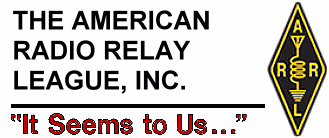It Seems to Us... Time for Another Breakthrough |
|
Amateur radio operators - and all electromagnetic spectrum users for that matter - have always lamented crowded bands and interference (QRM and QRN). That goes for licensed and unlicensed bands. In 1976 when this editorial was printed in the ARRL's QST magazine, spectrum occupation within allocated bands was defined by commonplace analog AM and FM methods. Co-existence was generally not possible for operation within a common frequency range. Spread spectrum modulation / demodulation changed all that beginning in the 1990s, but prior to then such schemes were largely the exclusive domain of military communications, as were many other spectrum-saving methods which are commonplace today. A big part of the reason is the significant advances in digital processing hardware and software, along with declassification of some of the algorithms that eventually found their way into cellphone, WiFi, and other commercial applications. Given that many of the professional engineers* and scientists who played a role in the transition were also Amateur Radio operators, is seems the editor's call for action was heeded by his readers. He projected 2,0000,000 amateur operators worldwide by 1980 (14 years hence). According to the ARRL's counting there are more than 760,000 Hams currently licensed in the U.S., with more than 3,000,000 worldwide per the IARU (International Amateur Radio Union) - 2020 estimates. * While as an electronics technician at Westinghouse in the early-mid 1980s, an über engineer I had the honor of working with breadboarded a digital spread spectrum mod/demod circuit for potential use in a project we were doing and showed it to our customer (DoD). Upon seeing it, the customer had a conniption fit wondering how our man came up with the concept, then confiscated the schematics and hardware because it was still considered a highly classified method. It Seems to Us... Time for Another Breakthrough
It has always been so, and there are a number of outstanding examples. In the earlier days of amateur radio, the shift from spark to CW not only made communication over greater distances possible, but also effectively increased the number of stations that could occupy a given band of frequencies, because each station took up a narrower slice of the spectrum. It was a technique adopted by amateurs not because they were regulated to do it, but because they found through their own experience that it was the most efficient way to operate. To a lesser degree, the shift from unfiltered to filtered power supplies further increased the efficiency with which amateur CW stations utilized their spectrum. The next major breakthrough of consequence was the shift from double-sideband to single-sideband phone, in the 1950s, again substantially increasing the efficiency with which amateurs used their portion of the spectrum and, again, done voluntarily. To be perfectly honest, amateurs were probably less conscious of the spectrum-saving advantages of SSB than they were of the fact that that type of phone operation provided easier and more efficient phone communication, particularly in working DX. Amateur radio throughout the world is growing and even in the United States, where the total number of amateurs has remained more or less constant for several years, we find signs of growth once again. By 1980 there will be upwards of a million amateurs throughout the world and by the year 2000 the total number of amateurs worldwide could well exceed two million. Regardless of our possible success at WARC-79, the bands are going to be crowded, especially as the percentage of amateurs using phone grows ever larger. It's time for another breakthrough. We need another spectrum-saving development that will help to accommodate the growth that we foresee. What will this breakthrough be? It seems to us that it has to be some sort of speech processing which will permit the trans-mission of amateur phone signals in a bandwidth no greater than half of what we experience at the present time. The next question is - is such a solution technically possible? The answer seems to be yes. Since writing the previous paragraphs and while on a recent West Coast trip, this writer listened to a demonstration of a system developed by an engineer out that way, in which a phone signal of approximately 3500 hertz was reduced to some 1800 hertz on-the-air bandwidth, all the while retaining excellent clarity. Furthermore, it appears that the circuitry to accomplish this wizardry will not be expensive. (Would you believe less than $25?) We hope that before long an article in QST will tell us how to proceed. QRX. - W1RU
Posted July 27, 2020 |
|

 We amateurs pride ourselves on the efficient use that we make of the spectrum
allotted to us. Some of our efficiencies come from our operating practices, some
from our use of advanced techniques.
We amateurs pride ourselves on the efficient use that we make of the spectrum
allotted to us. Some of our efficiencies come from our operating practices, some
from our use of advanced techniques.